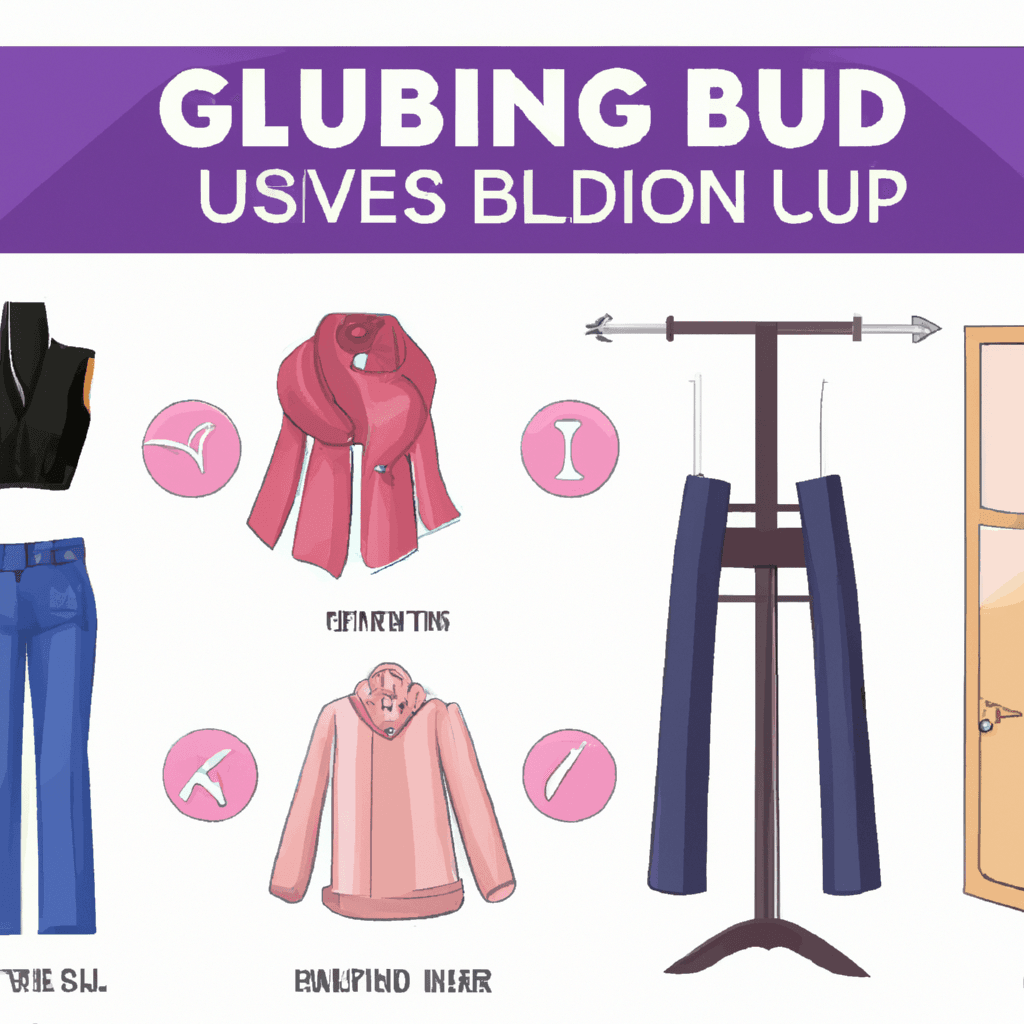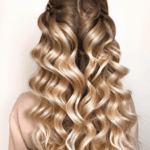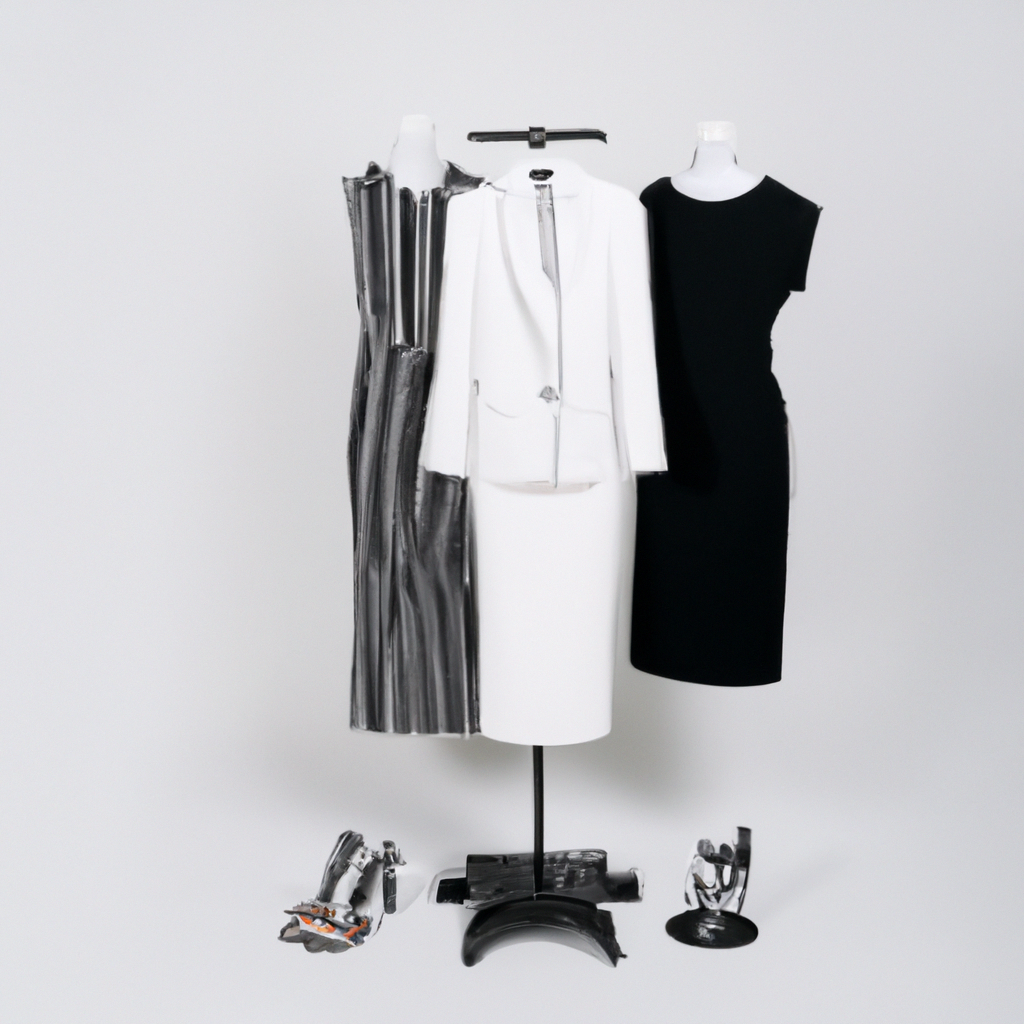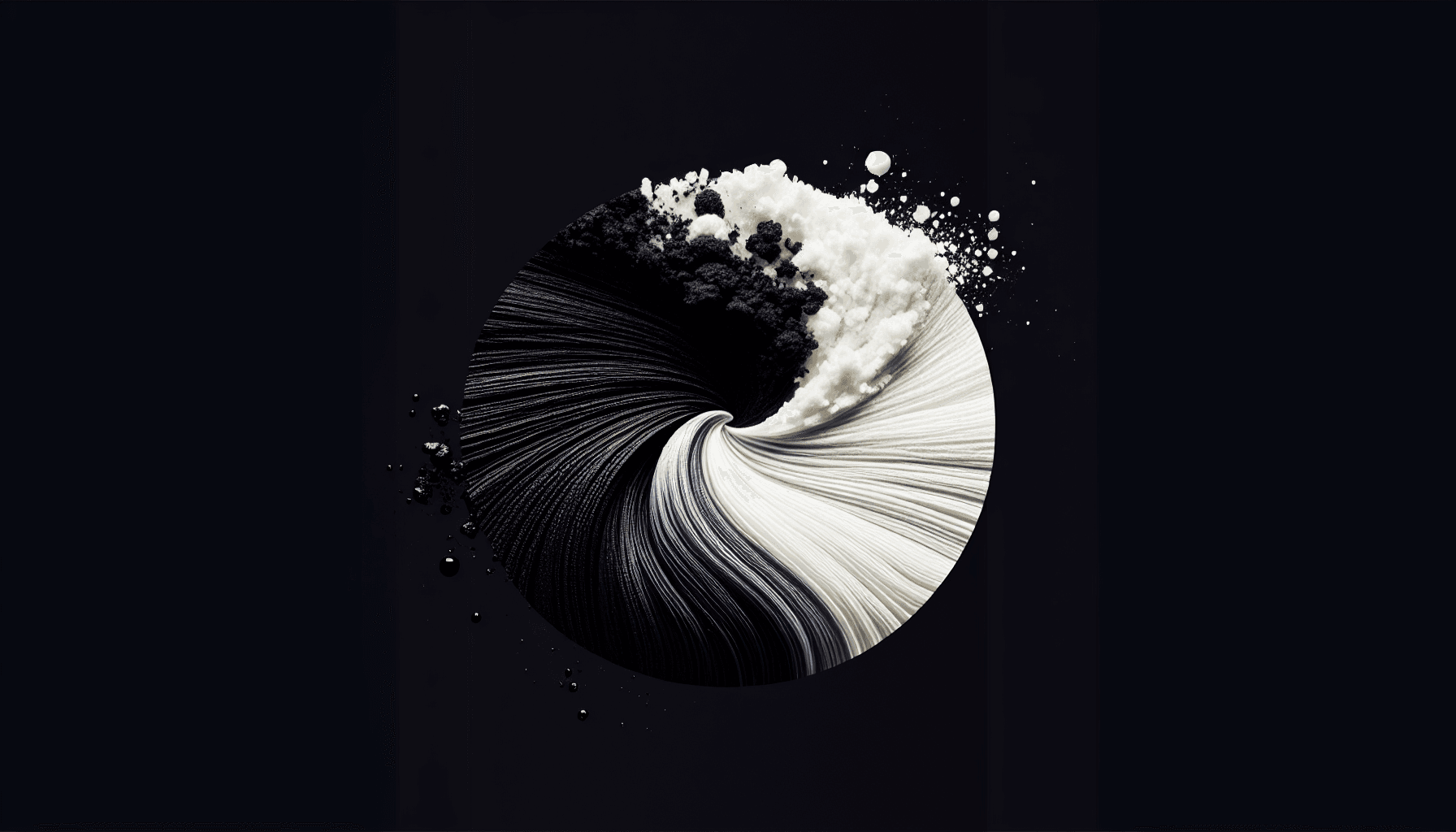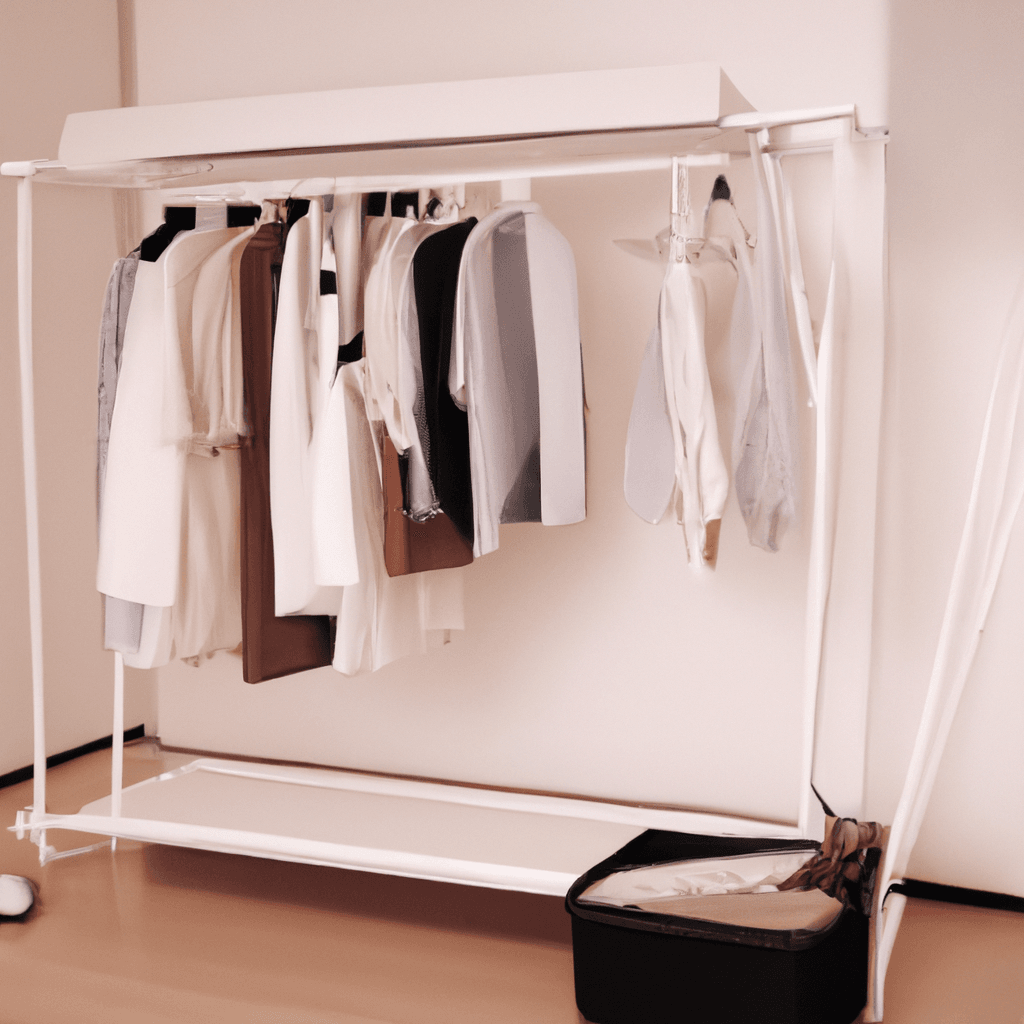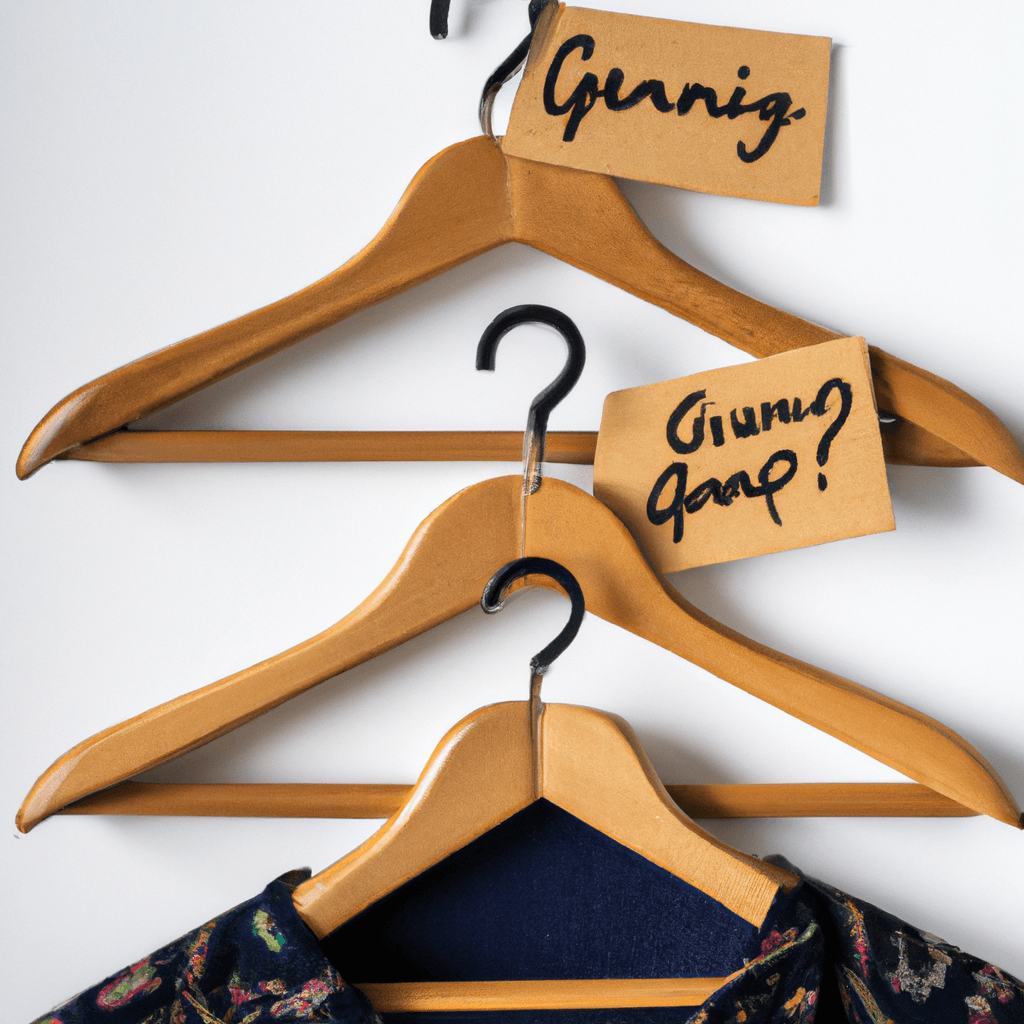Whether you’re just starting to explore the world of fashion or looking to revamp your current wardrobe, this article is your ultimate guide to building a fashionable and versatile wardrobe. From mastering the art of mixing and matching to investing in timeless staple pieces, we’ve got you covered. Get ready to elevate your style game and create a wardrobe that’s both on-trend and effortlessly adaptable to any occasion. It’s time to step up your fashion game and make getting dressed each day a stylish and stress-free experience. Let’s dive in!
Understanding the Importance of a Versatile Wardrobe
Defining a versatile wardrobe
A versatile wardrobe is one that consists of a carefully curated collection of clothing items that can be mixed and matched, allowing you to create a wide variety of outfit options. It includes pieces that can be easily dressed up or down, suitable for different occasions and seasons. The key to a versatile wardrobe is having a range of timeless, classic items that can be styled in various ways.
Benefits of a diverse clothing collection
Having a diverse clothing collection offers numerous benefits. Firstly, it allows you to express your personal style and creativity by mixing and matching different pieces to create unique outfits. Secondly, a versatile wardrobe saves you time and effort when getting ready in the morning, as you have a range of options readily available. It also helps to prevent the feeling of having “nothing to wear” by providing you with a multitude of outfit possibilities. Lastly, a diverse wardrobe ensures that you are prepared for any situation or event that may arise, whether it’s a casual outing, a professional meeting, or a formal celebration.
How style flexibility boosts confidence and functionality
Having a versatile wardrobe boosts both confidence and functionality. When you have a range of clothing options at your disposal, you can feel confident that you will always have something appropriate to wear for any occasion. This confidence radiates in the way you carry yourself and can positively impact your self-esteem. Additionally, a versatile wardrobe enhances functionality by allowing you to dress according to the demands of your day. Whether it’s a busy workday, a day filled with errands, or a relaxing weekend, having the right clothing options ensures that you are comfortable and prepared for whatever comes your way.
Identifying Personal Style
Recognizing your style influences
To build a versatile wardrobe, it is important to recognize your style influences. Look for patterns in the clothing choices you are naturally drawn to. Consider the colors, silhouettes, and fabrics that catch your eye. Pay attention to the styles you admire on others and take note of what appeals to you in fashion magazines or social media. By recognizing your style influences, you can create a wardrobe that truly reflects your personal taste.
Determining your lifestyle needs
Your lifestyle plays a significant role in shaping your wardrobe. Consider the activities you engage in on a daily basis and the types of events you regularly attend. If your lifestyle is more casual and laid-back, prioritize comfortable, durable pieces. If you have a professional career, invest in well-tailored and polished items. Understanding your lifestyle needs ensures that your wardrobe is practical and functional for your daily activities.
Finding inspiration in fashion role models
Fashion role models can provide inspiration and guidance when building your wardrobe. Look for individuals whose style you admire and try to identify the key elements that you can incorporate into your own wardrobe. This could be anything from their color choices and accessory selections to their overall aesthetic. Use fashion role models as a source of inspiration, but always remember to stay true to your own personal style.
Considering your body type and comfort
When building a versatile wardrobe, it is essential to consider your body type and prioritize comfort. Understand what silhouettes and cuts flatter your body shape and make you feel confident. Choose fabrics that feel comfortable against your skin and allow for ease of movement. Building a wardrobe that both fits well and is comfortable ensures that you will feel confident and at ease in your outfits.
Learning the Basics of Fashion
Understanding color theory in clothing
Color theory is an important aspect of fashion that can significantly impact your outfit choices. By understanding the basics of color theory, you can create visually appealing and cohesive outfits. Learn about color palettes, color combinations, and how different colors can affect your overall appearance. Experiment with incorporating complementary, analogous, or monochromatic colors into your outfits to achieve different looks.
The importance of fit in garments
Fit is key when it comes to fashion. No matter how stylish a piece is, if it doesn’t fit well, it won’t look good on you. Take the time to understand your body measurements and how different garment styles should fit. Invest in well-fitted clothing or consider getting items tailored to ensure a flattering and comfortable fit. A well-fitting garment can elevate your entire look and boost your confidence.
Learning about different fabric types
Fabric choice is crucial in determining the comfort, durability, and appearance of your clothing. Educate yourself about different fabric types and their properties, such as breathability, stretch, and texture. This knowledge will help you make informed decisions when shopping for new pieces. Consider the climate in your area and the intended use of each garment to ensure you choose fabrics that suit your needs.
Grasping the significance of seasonality in fashion
Understanding the seasonal aspects of fashion is essential for building a versatile wardrobe. Take note of the dominant colors, fabrics, and styles associated with each season. Invest in seasonal staples that can be layered or accessorized to create different looks. Being aware of seasonality allows you to stay on-trend and transition seamlessly between different weather conditions.
Essential Clothing Items to Own
The need for quality basics
Quality basics form the foundation of a versatile wardrobe. These are timeless, classic pieces that can be styled in countless ways. Invest in well-made garments such as white shirts, black trousers, denim jeans, and a tailored blazer. These items can be dressed up with accessories or paired with more statement pieces to create different looks for any occasion.
Diversifying pants, tops, and outerwear
To ensure versatility, it is important to diversify your collection of pants, tops, and outerwear. Have a range of different pants styles, such as straight-leg, wide-leg, and tailored trousers, to suit various outfits and occasions. Similarly, have a mix of tops and blouses in different cuts, colors, and patterns. Outerwear options should include a lightweight jacket, a warm coat, and a statement piece to add interest to your outfits.
Choosing the right undergarments
Undergarments play a crucial role in the overall look and comfort of your outfits. Invest in well-fitting bras, underwear, and shapewear that will provide the necessary support and enhance your silhouette. Choose undergarments that are seamless and in nude or neutral colors to ensure versatility and avoid visible lines.
Incorporating dresses and skirts
Dresses and skirts are essential for adding variety to your wardrobe. Choose a range of styles that flatter your body shape and can be dressed up or down. Invest in a versatile little black dress, a comfortable maxi dress, and a few different skirt lengths and styles. These pieces can be paired with different tops, jackets, and accessories to create countless outfit options.
Importance of Accessories
Elevating looks with jewelry
Accessories have the power to elevate even the simplest outfits. Invest in a collection of timeless jewelry pieces such as statement necklaces, hoop earrings, and delicate bracelets. These can be used to add a touch of glamour and individuality to your looks. Experiment with layering and mixing different jewelry pieces to create unique combinations that reflect your personal style.
Adding functionality with belts and hats
Belts and hats are not only fashionable but also functional accessories. Belts can cinch in an oversized dress or create definition at the waist of a tunic top. They can also be used to add a pop of color or texture to an outfit. Hats provide protection from the sun while adding a stylish element to your ensemble. Invest in a few different belts and hats that complement your wardrobe and enhance your personal style.
Choosing the right handbags
Handbags are both practical and fashionable accessories. Invest in a quality handbag that suits your lifestyle and personal style. Choose a neutral color and classic silhouette that can be easily paired with various outfits. For added versatility, consider investing in a convertible bag that can be worn as a crossbody, shoulder bag, or clutch.
Utilizing scarves for versatility
Scarves are incredibly versatile accessories that can transform any outfit. Learn different ways to tie and drape scarves to add an extra layer of style to your looks. Use scarves to add pops of color, texture, or print to an otherwise simple outfit. They can be worn around the neck, used as headbands or even tied to the straps of handbags for a chic touch.
Investing in Quality Footwear
Understanding why good shoes matter
Quality footwear is worth investing in as it not only provides comfort but also enhances the overall look and feel of your outfits. Ill-fitting or poorly made shoes can ruin an otherwise well-styled ensemble. Invest in comfortable yet stylish shoes that suit your lifestyle and personal style. Pay attention to the materials, construction, and durability of the shoes to ensure they will stand the test of time.
Different types of must-have shoes
Certain types of shoes are considered must-haves in a versatile wardrobe. These include a pair of black heels or pumps, comfortable flats or loafers, versatile boots (such as ankle boots or knee-high boots), and casual sneakers. Having these staple shoe options allows you to effortlessly switch up your footwear depending on the occasion or outfit.
Maintaining and dressing up with footwear
Proper maintenance is essential to keep your footwear in top condition. Regularly clean and polish leather shoes to maintain their shine and prolong their lifespan. Invest in shoe storage solutions to keep your shoes organized and prevent damage. Additionally, dress up your outfits by incorporating footwear with interesting details, such as embellishments or unique patterns. Don’t be afraid to experiment with different shoe styles to add character to your outfits.
Developing A Smart Shopping Strategy
Setting a clothing budget
Setting a clothing budget is an important step in building a versatile wardrobe. Determine how much you can comfortably afford to spend on clothing each month or season. This will help you make informed decisions while shopping and prevent impulsive purchases. Prioritize quality over quantity and invest in key pieces that will stand the test of time.
Investing in timeless over trendy
While it’s fun to experiment with trends, it is important to prioritize timeless pieces when building a versatile wardrobe. Trends come and go, but classic, well-made items will always be in style. Invest in wardrobe staples that transcend seasonal fads and can be worn for years to come. Choose pieces with clean lines, neutral colors, and minimalistic designs that can be easily mixed and matched.
Recognizing when to save and when to splurge
It’s important to strike a balance between saving and splurging on clothing items. Prioritize investing more in high-quality, staple pieces that you will wear frequently and for a long time. Items like a tailored blazer, a versatile pair of black pants, or a classic handbag are worth splurging on. On the other hand, save on trendier pieces that may not have longevity in your wardrobe.
How to shop sales effectively
Sales can be a great opportunity to find quality pieces at a discounted price. However, it’s important to shop sales effectively to avoid unnecessary purchases. Make a list of specific items you are looking for and stick to it. Avoid buying items just because they are on sale. Instead, focus on finding items that complement your current wardrobe and fill gaps in terms of functionality or style.
Maintaining Your Wardrobe
Proper storage of clothing items
Proper storage of clothing items is essential for maintaining their condition and longevity. It is important to store garments in a clean, dry environment to prevent damage from moisture, pests, or sunlight. Use appropriate hangers for different types of clothing, such as padded hangers for delicate items and wooden hangers for tailored pieces. Fold garments made from delicate fabrics to avoid stretching or distortion.
When and how to launder different fabrics
Knowing when and how to launder different fabrics is crucial for preserving their quality. Follow the care instructions on clothing labels and separate garments based on their fabric type and color. Delicate fabrics may require handwashing or gentle machine cycles, while sturdier fabrics can withstand regular machine washes. Use appropriate detergents and fabric softeners to prevent fading or damage. Hang or lay garments flat to dry to avoid shrinkage or misshaping.
Understanding clothing repair and alterations
Clothing repair and alterations are valuable skills to have when maintaining your wardrobe. Learn basic sewing techniques to mend small damages or replace buttons. If a garment doesn’t fit properly, consider taking it to a professional tailor to ensure a perfect fit. Alterations can breathe new life into clothing items that would otherwise go unused, allowing you to maximize the potential of your wardrobe.
Building Outfits and Style Mixing
Mastering the art of layering
Layering is an essential skill in building versatile outfits. Experiment with different combinations of tops, jackets, and sweaters to create dimension and interest. Layering allows you to mix and match different pieces while also providing practicality for changing weather conditions. Play with different textures, lengths, and proportions to achieve a balanced and stylish look.
Mixing patterns and colors
Once you have a good understanding of color theory, you can confidently mix patterns and colors to create visually interesting outfits. Start by pairing patterns and colors that share a similar hue or complement each other. Consider the scale and intensity of patterns to ensure they harmonize rather than clash. Mixing patterns and colors adds personality and uniqueness to your outfits, allowing you to stand out from the crowd.
Accessorizing for different occasions
Accessories are the finishing touch that can elevate your outfits for different occasions. Consider the dress code and tone of the event when selecting accessories. For formal events, opt for elegant jewelry pieces and a polished handbag. For casual outings, add a pop of color with a statement necklace or a fashionable crossbody bag. Accessorizing allows you to tailor your outfits to the specific occasion and express your personal style.
Planning Ahead for Fashion Needs
Prepping your wardrobe for each season
To ensure your wardrobe remains versatile throughout the year, it’s important to plan ahead for each season. Assess your existing collection and identify any gaps in terms of season-specific items. Invest in versatile pieces that can be layered or transitioned into different seasons. Consider the climate and temperature changes in your area and choose items that are suitable for the particular season.
Adapting your closet for lifestyle changes
Your wardrobe should always reflect your current lifestyle. If your lifestyle undergoes changes, such as starting a new job, becoming a parent, or entering a new phase of life, it’s important to adapt your closet accordingly. Assess your wardrobe and identify the pieces that align with your new lifestyle. Donate or sell items that no longer serve a purpose and invest in new pieces that cater to your evolving needs.
Always looking ahead to future fashion trends
Fashion is constantly evolving, and it’s important to stay informed about future trends. Follow fashion influencers, read fashion magazines, and browse reputable fashion websites to gain insight into upcoming trends. However, always remember to stay true to your personal style and prioritize pieces that you genuinely love. Investing in a few on-trend items each season can help keep your wardrobe fresh and fashion-forward.

